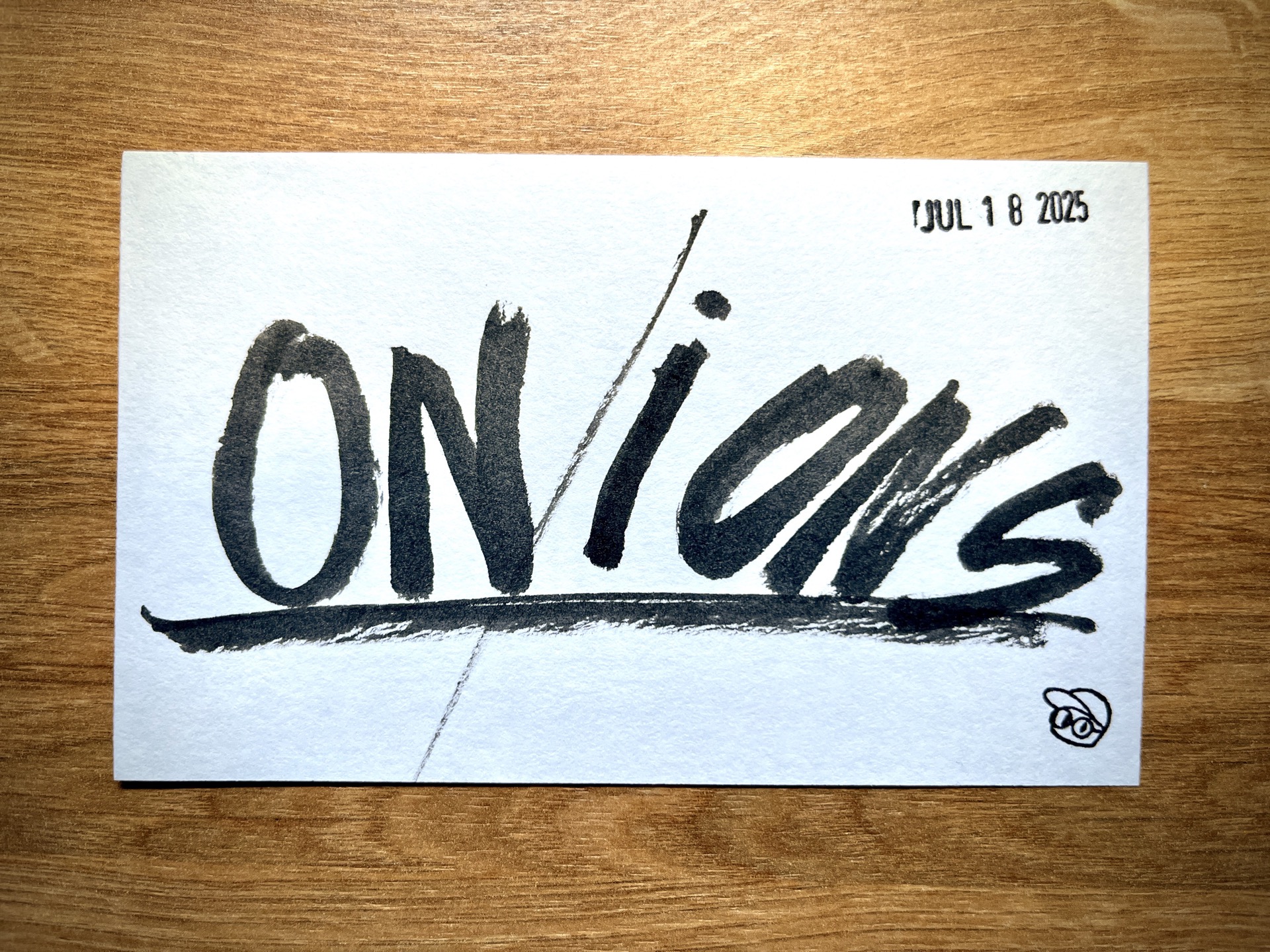When we were building Webflow AI Site Builder, I shared a metaphor with the team that stuck.
I called it “Chopping onions.”
It’s my shorthand for the kind of work that’s necessary but not fun. The stuff that isn’t hard because it’s ambiguous or complex—it’s hard because there’s just so much of it.
You don’t think about it. You just… do it.
One thing at a time.
Kitchens
I compared it to my time working in restaurants over a decade ago.
Before I stepped into the tech industry, the frantic kitchens of busy restaurants were my stomping ground—places filled with rhythmic knife chopping, disruptive timers beeping, and cooks casually shouting words like “behind,” “heard,” and “hot.”
---
Sidenote: I had one co-worker who never said “behind.” Instead, he went, “beep beep!”—like the Roadrunner remixed with a reversing truck. That was fun. Back to the post.
---
Among all the prep work, chopping onions was one of those jobs no one wanted to do.
Not a few onions. Not even a bunch. I’m talking boxes of them. Slimy skins. The sharp sting in your eyes. That smell that clings to your hands even after scrubbing. (And no, that trick of rubbing your fingers on stainless steel doesn’t make the smell go away. That’s how many onions you chopped.)
Time just standing still, knife in hand, relentlessly, working your way through the pile.
There’s no “trick” to it. No shortcut.
You just chop.
Onion Problems
In tech, especially engineering, we’re wired to want to automate everything unpleasant. Write a script. Build a tool. Add a plugin. Anything but manually grind through the task.
Sometimes that’s smart. That’s why we have computers. But sometimes, automation costs more than it’s worth. Sometimes, the quickest path forward is the most old-school:
Just chop the onions.
An onion problem isn’t ambiguous. It’s not creative. It’s not fun. It’s tedious because of volume, not difficulty.
You know it when you feel it. And you only really feel it once you’ve sat with the problem long enough to smell it.
- Need to audit a product’s surface area by taking hundreds of screenshots, stitching together flows, and writing up what works? That’s an onion problem.
- Fixing 72 instances of a bug that’s too subtle for regex or AI, requiring hours of manual testing? Onion problem.
- Writing repeat documentation your team’s already tired of explaining? Yep, onions.
Onion problems don’t look innovative. But they move things forward. They get. stuff. done.
It sucks. It stings. It smells. But you do it anyway.
Chop First
The worst thing you can do with an onion problem? Push it around. Leave it in the fridge. Hope someone else will do it later. (There’s no such privilege as backlogging like this in a restaurant kitchen.)
The only way through is to start chopping.
If you’re a lead, my recommendation is this:
Chop first. Chop often.
This matters not just because it gets the work done, but because it shows that you’re willing to endure the same hardships as those you lead. So when the time comes to delegate, there’s no hesitation or doubt—the team knows you’d be, well, not happy to, but willing to chop those onions yourself.Because you’ve done it before. You’ve moved the project forward by stepping in so someone else didn’t have to.
Always Onions
You’ll always have onion problems.
Even in the age of AI, they’ll exist. They’ll just look—and smell—a little different.
So the next time you’ve got a couple of boxes in front of you, don’t overthink it.
Take a breath. (Or hold your breath.)
Grab your knife.
And start chopping.
